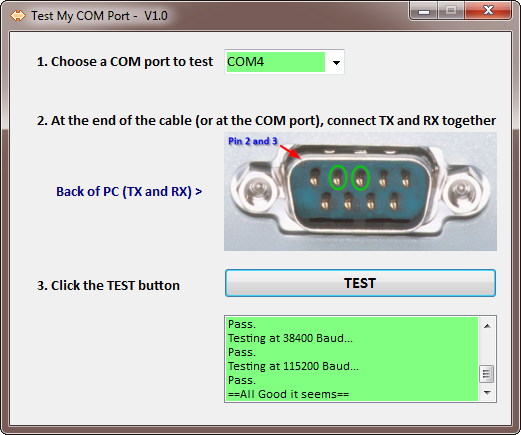

Refer to the pins below based on your connector type. From port 1 to port 2, wire the shorted positive signals together, and the shorted negative signals together.On each RS-485 port, place jumper wires between the TXD+ and RXD+ signals, and between TXD-and RXD- signals.The positive connections are indicated in red and the negative connections are indicated in blue.įor 2-wire configurations, you will need two RS-485 ports to achieve a set up similar to a traditional loopback test.


On an RS-422/485 port, connect the TXD+ signal to RXD+ signal, and the TXD- signal to the RXD- signal.
#How to test rs232 port serial#
*It is not recommended to use the RJ-50 connector by itself to perform a loopback test due to the small separation between pins. If you use a RJ-50 to DB-9 serial cable (Part Number 182845-XX), a loopback test can be performed using the pins for a DB-9 connector. On an RS-232 port, connect the transmit (TXD) signal to the receive (RXD) signal. For more details on NI serial hardware pinouts, refer to the Serial Quick Reference Guide. Note: The pin diagrams provided for this tutorial are for the female connector. RS-422/485) and the type of serial connector you have. Identify what serial communication protocol you are using (RS-232 vs. Refer to the sections below to properly connect your hardware.


 0 kommentar(er)
0 kommentar(er)
